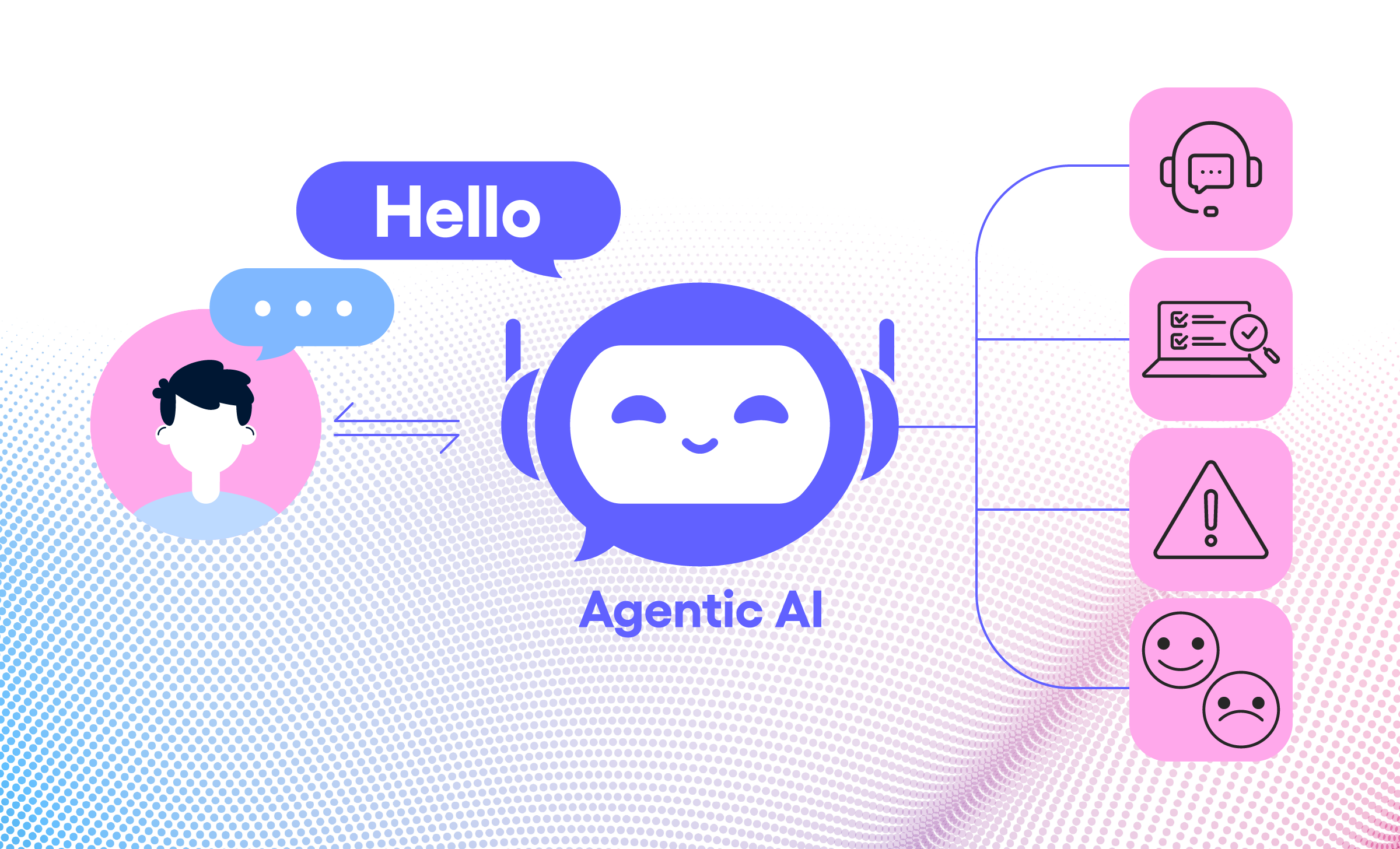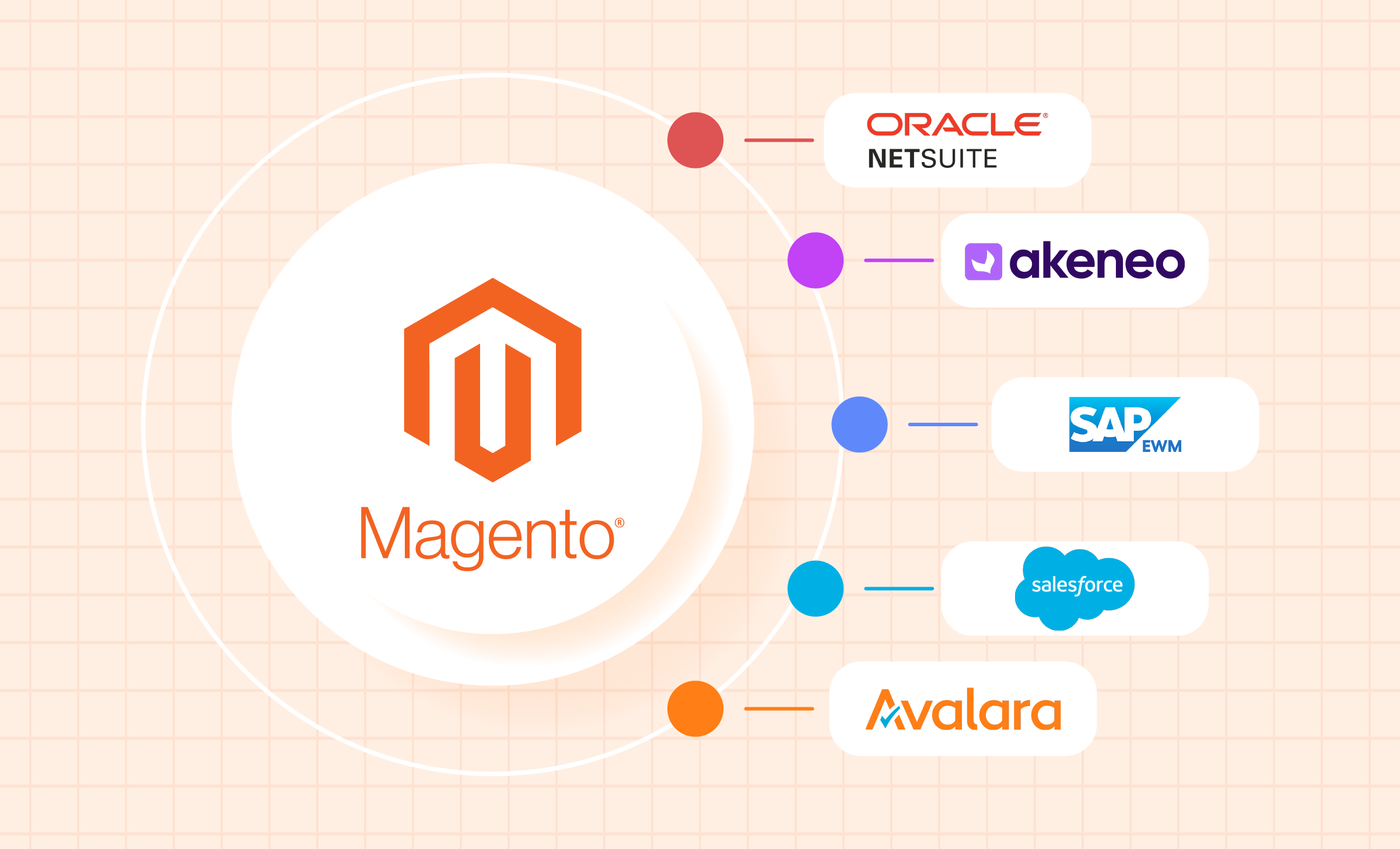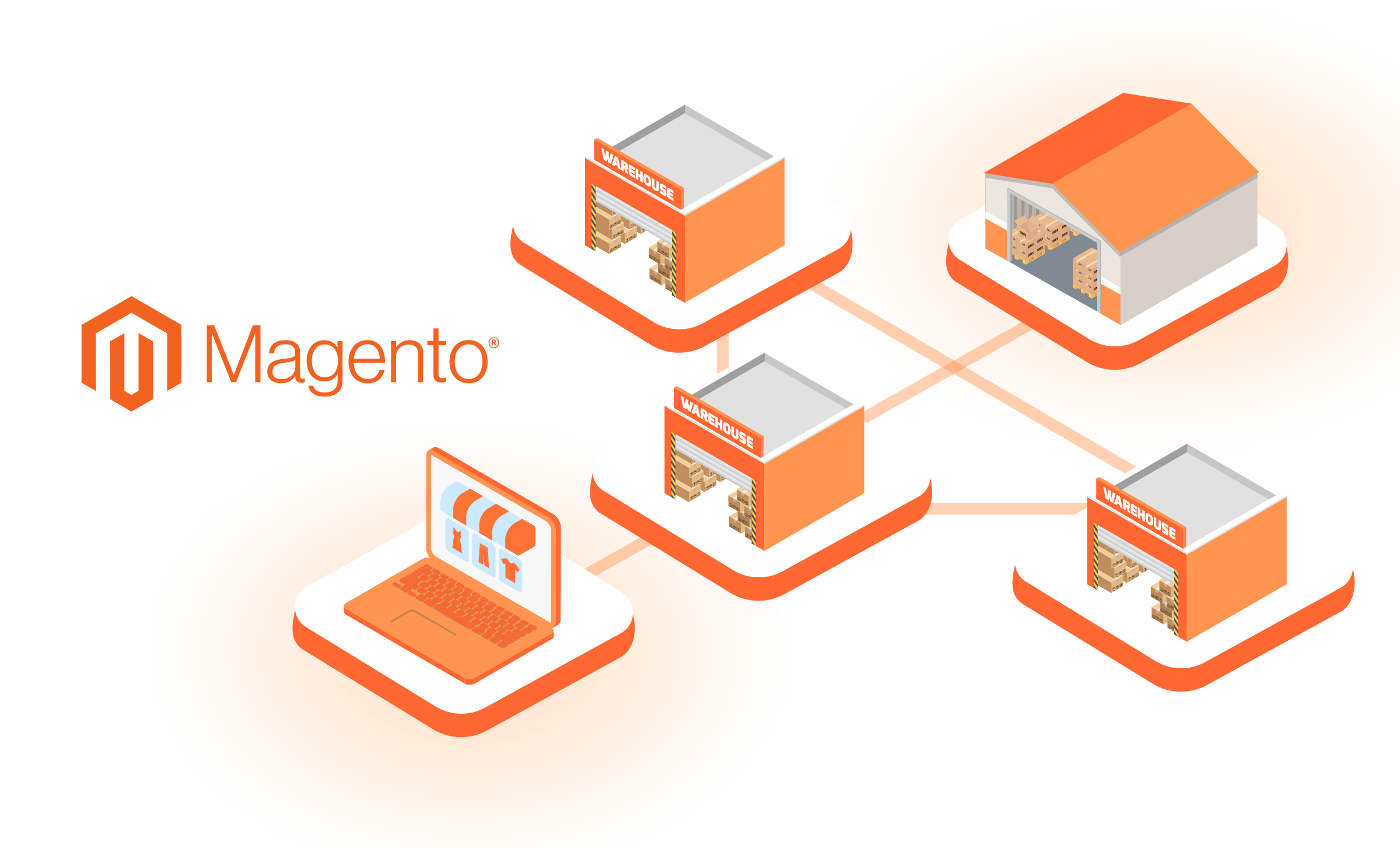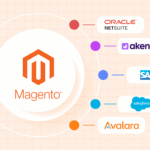Artificial intelligence is moving quickly from experimentation to execution in eCommerce. Retailers use it for recommendations, fraud detection, and content generation, and reporting measurable gains in conversion and efficiency. The conversation is no longer about whether AI will be adopted but how it should be implemented and at what scale.
Magento deserves particular attention in this context. Unlike SaaS-first platforms, it sits within Adobe’s wider digital experience stack and inherits Adobe’s significant investment in AI. This positions Magento not simply as an eCommerce engine but as part of a broader AI-enabled ecosystem. At the same time, Magento retains its traditional strengths: extensibility, a large integration marketplace, and the ability to build custom workflows.
The purpose of this piece is to map out where AI makes a practical impact for Magento storefronts and its native, third-party, and custom alternatives to implementation.
TMO brings over 10 years of experience in custom Magento development, and now leverages like AI-first approaches to deliver scalable and highly personalized commerce experiences.
Adobe's AI Ecosystem and How it Benefits Magento
Adobe has been rolling out generative AI across its Experience Cloud portfolio. From its generative engine for text and images, and personalization and analytics layer, Adobe's solutions are now integrated directly into applications used for content management, customer journeys, and marketing automation. This means that AI capabilities are not standalone tools but embedded into workflows that run across planning, asset creation, personalization, and analytics.
For a Magento storefront, this integration matters because the same AI that drives a personalized campaign in Adobe Experience Manager can also shape on-site merchandising and product discovery.
Several Adobe solutions are relevant in an eCommerce context:
- Adobe Experience Manager (AEM): A content management and delivery platform that now leverages AI for personalization, asset tagging, and automated content workflows.
- Adobe GenStudio: A collaborative platform for generating, approving, and deploying creative assets using Firefly, designed to speed up campaign execution.
- Adobe Sensei: The analytics and personalization engine embedded across Adobe applications, supporting recommendations, audience segmentation, and predictive insights.
- Adobe Firefly: Adobe’s generative AI model for text-to-image, text-to-text, and creative editing, used for product imagery, banners, and campaign assets.
- Adobe Experience Platform (AEP) and Agent Orchestrator: The data and orchestration layer that connects AI agents across channels, enabling consistent personalization across storefronts, email, and advertising.
Magento fits into this ecosystem as the commerce layer. It inherits personalization from Sensei, creative workflows from Firefly and GenStudio, and cross-channel orchestration from AEP. In practice, this positions Magento as commerce infrastructure aligned with Adobe’s AI roadmap, while still retaining their extensibility for third-party or custom-built AI workflows:
| Adobe AI Capability | Magento Store Impact |
|---|---|
| Sensei (personalization) | Recommendations, segmentation, merchandising |
| Firefly / GenStudio (generative AI) | Creative assets, localized product content, campaign automation |
| AEM (content management) | AI-driven content tagging and personalization connected to commerce |
| AEP + Agent Orchestrator | Unified personalization and AI agents across storefront, marketing, and customer journeys |
You may also like: Effective Upselling: +30% Profit Using Magento & AEMPersonalized product recommendations are key to effective cross- and upselling. Read how Magento and Adobe AEM enable full-funnel strategies.Effective Upselling with Magento and AEM, and how brands achieve up to 30% higher profit through integrated commerce and content strategies.
Magento’s relevance, however, does not stop with the direct integration Adobe’s native AI stack. Its extensibility supports third-party integrations and custom development, allowing merchants to embed specialized AI tools or even design proprietary agents. This flexibility is central to Magento’s positioning and will be examined more closely below.
Core AI Use Cases for Magento eCommerce
AI in eCommerce has two distinct domains of impact. On the front end, it improves user experience, which directly influence sales. On the back end, it increases efficiency by streamlining repetitive tasks, reducing cost and operational risk.
The problem is that most conversations about AI in commerce remain abstract. Retailers know they should “do something with AI,” but it is less clear what that actually looks like in practice. Here are seven categories where AI can be applied concretely in your eCommerce environment.
Further reading: Checkout Drop? How Customization Can Boost Your ConversionsTailoring checkout to your business is key to healthier conversion rates. Learn how to diagnose and approach your store's next optimization.Checkout Optimization in eCommerce: How Magento stores reduce friction and lift conversions through custom checkout flows.
| Use Case | How-to |
|---|---|
| Conversational Assistants | Integrate a large language model agent via Magento’s API layer, or connect Adobe’s Agent Orchestrator for multi-channel consistency. Third-party solutions include Zendesk AI and Intercom bots. |
| Search and Discovery | Replace the default search with an AI-powered semantic engine plugged into Magento’s catalog. Solutions include Adobe Sensei for personalization signals, Algolia or ElasticSearch AI extensions for semantic and visual search, or headless API integrations for specialized providers. |
| Merchandising and Content | Use Adobe Firefly and GenStudio to generate product copy and creative assets, feeding them directly into Magento catalogs. Complement with AI translation services or content enrichment APIs. |
| Recommendation and Personalization | Deploy Adobe Sensei-driven recommendations inside Magento or connect external engines such as Nosto or Dynamic Yield. In custom frameworks, leverage Magento’s customer and order data to train bespoke algorithms. |
| Operations | Integrate fraud detection APIs like Signifyd or Kount into Magento’s order management workflow. For demand forecasting, connect predictive analytics platforms or build models on top of Magento transaction data. |
| Visual and Experiential Enhancements | Connect AR/VR modules into Magento’s front end or use Adobe Firefly to generate localized lifestyle imagery. Solutions include Threekit and custom headless integrations with AR frameworks. |
| Content Creation | Use Adobe Firefly and GenStudio to generate localized copy and imagery, integrate translation AI for multi-language support, and connect outputs directly to Magento’s product catalog. |
- Conversational Assistants
AI-powered chatbots and voice interfaces reduce support workload while keeping response times consistent. They can handle common pre-purchase questions, guide shoppers through product selection, and manage post-purchase issues. In B2B settings, assistants can streamline repeat ordering and respond to account-specific inquiries.- Example: A Magento store uses an AI chatbot to handle order tracking and FAQs, reducing ticket volume by 30%.
- Search and Discovery
Semantic and visual search improve discoverability in catalogs where keyword search falls short. Shoppers can find products through natural language queries or by uploading reference images. For large or complex catalogs, these tools significantly reduce friction.- Example: A fashion retailer enables image-based search so users can upload a photo and find visually similar products.
- Merchandising and Content
AI supports automated product enrichment, image tagging, SEO-optimized descriptions, and multilingual translations. Global retailers benefit from reduced manual workload and greater consistency in product data and marketing assets.- Example: Automated generation of product descriptions in multiple languages reduces launch timelines for cross-border campaigns.
- Recommendation and Personalization
Personalization engines suggest relevant products and tailor offers in real time. For B2C, this improves conversion by surfacing the most relevant items. For B2B, AI can generate contract-specific pricing or predictive reorder prompts, directly tied to account behavior.- Example: Personalized bundles at checkout increase average order value by surfacing products based on cohort behavior.
- Operations
Fraud detection models, demand forecasting, and AI-driven inventory optimization lower operational risk and improve efficiency. These applications often produce measurable cost savings, making them a common early investment area.- Example: Fraud scoring during checkout reduces chargebacks by flagging suspicious orders in real time.
- Visual and Experiential Enhancements
Generative image editing and AR/VR product trials enhance presentation quality and reduce buyer hesitation. Immersive experiences are particularly effective for high-ticket items or products where fit and visualization influence purchase decisions.- Example: An electronics brand enables AR “view in room” functionality for large appliances, increasing conversion rates for high-ticket items.
- Content Creation
AI enables scalable product enrichment through rich descriptions, automated translations, and generative imagery. This reduces manual workload, speeds up catalog launches, and ensures consistent quality across markets.- Example: A retailer expanding into China enriches its product catalog with AI-generated descriptions and auto-translated content, cutting time-to-market by weeks.
Implementation Models for AI in Magento
As mentioned above, on top of Adobes's AI Ecosystem, Magento's extensible codebase and custom data structures provide a flexible foundation for introducing AI into your stores. When approaching this, we can look at it as three different implementation paths, each with is advantages and limitations:
1. Native AI (Adobe Sensei and Firefly)
Sensei provides out-of-the-box personalization, product recommendations, and customer insights, while Firefly generates creative assets such as product imagery, banners, and localized copy. These tools are integrated into the Adobe Experience Cloud, which means they connect commerce, marketing, and content workflows. The strength of native AI lies in convenience and alignment with Adobe’s roadmap. The tradeoff is that functionality is limited to Adobe’s models and feature releases, which may not cover niche or industry-specific requirements.
2. Third-Party Integrations
Magento’s marketplace and enterprise partner ecosystem provide access to specialized AI solutions: fraud detection systems, advanced search and discovery platforms, AR/VR modules, and large language model agents. These integrations often bring proven, domain-specific capabilities that Adobe does not prioritize. The risk is dependency on multiple vendors, which can complicate governance, support, and long-term cost of ownership.
3. Custom Frameworks and AI Agents
Magento’s open architecture enables merchants to embed AI into APIs, checkout flows, and operational systems. Enterprises can design proprietary AI agents for use cases such as predictive reorder models, dynamic contract pricing, or automated campaign orchestration. This approach offers maximum control and differentiation, but it also demands internal expertise, robust data governance, and higher upfront investment.
Magento’s flexibility allows enterprises to adopt AI through distinct models, and the most effective implementations often combine these approaches, aligning standardized capabilities with selective customization where differentiation creates value. As outlined above, Magento provides the breadth to support all these options, which is why it remains a platform of choice for TMO when delivering custom enterprise-level builds.
Best Practices for AI Adoption
AI delivers value in commerce when it is applied with discipline, and poorly defined initiatives or weak data foundations tend to produce little measurable impact. Hera are some practices reduce that risk:
- Start with measurable, high-ROI use cases. Search relevance, product recommendations, and fraud detection have established benchmarks and clear business impact. These are safer entry points than speculative or experimental applications.
- Avoid “AI for AI’s sake.” Deployments should map to specific KPIs such as conversion rates, inventory turnover, or fraud reduction. Vague goals like “improving customer experience” lack accountability and often lead to wasted investment.
- Prioritize data quality. AI outcomes are only as reliable as the data used to train or feed models. Poor product attribution, inconsistent catalog data, and incomplete customer records undermine effectiveness. This remains a frequent barrier to effective AI adoption.
- Maintain frictionless user experience. AI should improve efficiency or clarity, not add complexity. Overly aggressive personalization, intrusive chatbots, or opaque decision-making can create distrust and reduce conversion.
- Deploy incrementally and scale validated workflows. Effective programs use a phased approach: test in controlled domains, measure ROI, and expand only after results are validated. Attempts to roll out AI broadly without testing usually increase costs without clear gains.
The success of AI projects in Magento is determined less by the technology stack and more by governance. Clear objectives, reliable data, and disciplined rollout strategies matter more than the choice between native, third-party, or custom solutions.
Implementing AI-driven Workflows with Magento and TMO
While not exclusive to the platform, Magento’s position within Adobe’s ecosystem gives it a structural advantage for AI-driven commerce. Native capabilities such as Sensei and Firefly extend into storefront workflows, while Magento’s extensibility supports both third-party integrations and custom agentic workflows. This combination allows enterprises to unify AI across:
- Customer Engagement,
- Marketing Analytics,
- Content Creation,
- and Operational Efficiency.
If you want to evaluate how AI can enhance personalization, streamline operations, or accelerate creative workflows in Magento, schedule a consultation with TMO to discuss how AI applies to your specific project in building scalable and localized commerce experiences.














